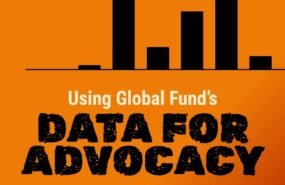GF Board Meeting and the New Strategy
- 05.05.2016 06:16
- Post Views: 1,055
The Global Fund Board Meeting and the Approved New Strategy 2017-2022
http://www.aidspan.org/node/3730
On 26-27 April 2016, the Global Fund Board held its 35th meeting in Abidjan, Côte d’Ivoire. The Board approved a new strategy “The Global Fund Strategy 2017-2022: Investing to End Epidemics” aimed at maximizing impact, strengthening systems for health, promoting and protecting human rights and gender equality, and mobilizing additional resources. Also the Board approved several key documents reflecting the main decisions made at the meeting: eligibility policy, new policy on sustainability, transition and co-financing, challenging operating environments policy and methodology for the 2017-2019 allocations.
Essential changes:
– Key population adjustment was added, namely the “Adjustment factor for populations disproportionately affected by HIV and TB, and in low endemicity malaria settings” to the list of qualitative factors to calculate the country allocations.
– During the clarification process, participants received assurance that sustainability & transition policy will be applicable to those countries currently transiting. Besides, to ensure successful transitions a greater emphasis was put on the transition readiness report. According to the changes introduced to the policy, for the greater assurance that transition process is going right, regular updates will be provided to the Strategy Committee.
– At this stage, the catalytic funding was approved for $800 million in addition to the country allocations. In case of successful replenishment exceeding USD 13 billion, there is a commitment that the Strategy Committee will review and increase the catalytic investments.
Board adopts new Strategy for 2017-2022: “Investing to End Epidemics”
http://www.aidspan.org/node/3721
The Global Fund Board has approved a strategy to guide the organization for the next six years.
Vision statement:
“A world free of the burden of AIDS, tuberculosis and malaria with better health for all.”
Mission statement:
“To attract, leverage, and invest additional resources to end the epidemics of HIV, tuberculosis, and malaria to support attainment of the Sustainable Development Goals.”
“The Global Fund Strategy 2017-2022: Investing to End Epidemics” – is built around four strategic objectives, as follows:
- maximize impact against HIV, TB and malaria;
- build resilient and sustainable systems for health;
- promote and protect human rights and gender equality; and
- mobilize increased resources.
Each strategic objective is comprised of between four and seven operational objectives.
For example the strategic objective on human rights and gender equality includes operational objectives such as introducing and scaling up programs that remove human rights barriers to accessing services; and supporting the meaningful engagement of key and vulnerable populations and networks in Global Fund–related processes.

The four strategic objectives are underpinned by what The Global Fund calls “strategic enablers” – i.e. (a) innovating and differentiating along the development continuum; and (b) supporting mutually accountable partnerships.
The new Strategy will build on that model to achieve impact at country-level. The Strategy says that civil society and community groups will continue to be instrumental (a) as advocates for increased funding for the Global Fund, for health, and for the three diseases, to hold their governments accountable; and (b) to deliver of high quality services for hard to reach populations.
The Global Fund Strategy 2017-2022: Investing to End Epidemics, Board Document GF-B35/02, should be available shortly at www.theglobalfund.org/en/board/meetings/35.
New Strategy has a dual focus on high burden/low income countries and vulnerable populations
There are five operational objectives under the first strategic objective, as follows:
- Scale-up evidence-based interventions with a focus on the highest burden countries with the lowest economic capacity, and on key and vulnerable populations disproportionately affected by the three diseases.
- Evolve the allocation model and processes for greater impact, including innovative approaches differentiated to country needs.
- Support grant implementation success based on impact, effectiveness, risk analysis, and value-for-money.
- Improve effectiveness in challenging operating environments through innovation, increased flexibility, and partnerships.
- Support sustainable responses for epidemic control and successful transitions.
Aidspan has briefly summarised all of them in this article.
Services for migrants and refugees from Ukraine – HIV/TB care with a focus on key populations
Due to the increasing flows of refugees from Ukraine because of Russia’s invasion of Ukraine, the EECA Regional Platform created a spreadsheet to fill contacts details of face-to-face and online services for refugees and migrants (with a focus on HIV/TB care and key population groups).
Regional Platform – EECA
This web-resource is a part of new regional communication and coordination project “Regional Civil Society and Community Support, Coordination and Communication Platform - EECA”, implemented by Eurasian Harm Reduction Association (EHRA).
Tags
See also
-
Webinar: Using Global Fund's Data for Advocacy 12.06.2025 12:00
-
GC7 Grant Reprioritization: Updated Timelines 10.06.2025 14:37
-
GFAN reports back: 53rd Global Fund Board meeting 26.05.2025 14:26







